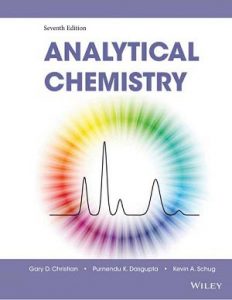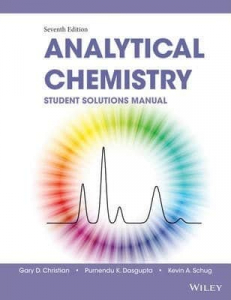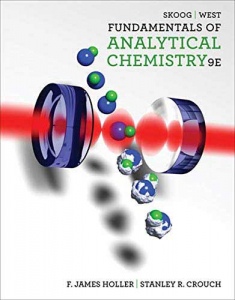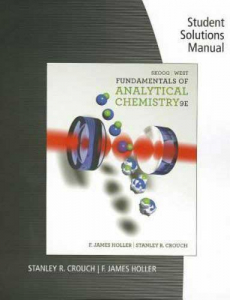[fusion_builder_container hundred_percent=”no” hundred_percent_height=”no” hundred_percent_height_scroll=”no” hundred_percent_height_center_content=”yes” equal_height_columns=”no” menu_anchor=”” hide_on_mobile=”small-visibility,medium-visibility,large-visibility” status=”published” publish_date=”” class=”” id=”” background_color=”” background_image=”” background_position=”center center” background_repeat=”no-repeat” fade=”no” background_parallax=”none” enable_mobile=”no” parallax_speed=”0.3″ video_mp4=”” video_webm=”” video_ogv=”” video_url=”” video_aspect_ratio=”16:9″ video_loop=”yes” video_mute=”yes” video_preview_image=”” border_size=”” border_color=”” border_style=”solid” margin_top=”” margin_bottom=”” padding_top=”” padding_right=”” padding_bottom=”” padding_left=””][fusion_builder_row][fusion_builder_column type=”1_1″ layout=”1_1″ spacing=”” center_content=”no” link=”” target=”_self” min_height=”” hide_on_mobile=”small-visibility,medium-visibility,large-visibility” class=”” id=”” background_color=”” background_image=”” background_image_id=”” background_position=”left top” background_repeat=”no-repeat” hover_type=”none” border_size=”0″ border_color=”” border_style=”solid” border_position=”all” border_radius=”” box_shadow=”no” dimension_box_shadow=”” box_shadow_blur=”0″ box_shadow_spread=”0″ box_shadow_color=”” box_shadow_style=”” padding_top=”” padding_right=”” padding_bottom=”” padding_left=”” margin_top=”” margin_bottom=”” animation_type=”” animation_direction=”left” animation_speed=”0.3″ animation_offset=”” last=”no”][fusion_title hide_on_mobile=”small-visibility,medium-visibility,large-visibility” class=”” id=”” content_align=”left” size=”1″ font_size=”” line_height=”” letter_spacing=”” margin_top=”” margin_bottom=”” margin_top_mobile=”” margin_bottom_mobile=”” text_color=”” style_type=”default” sep_color=”#e91e63″]
کتاب های تخصصی آنالیز مواد
[/fusion_title][/fusion_builder_column][/fusion_builder_row][/fusion_builder_container][fusion_builder_container hundred_percent=”no” hundred_percent_height=”no” hundred_percent_height_scroll=”no” hundred_percent_height_center_content=”yes” equal_height_columns=”no” menu_anchor=”” hide_on_mobile=”small-visibility,medium-visibility,large-visibility” status=”published” publish_date=”” class=”” id=”” background_color=”” background_image=”” background_position=”center center” background_repeat=”no-repeat” fade=”no” background_parallax=”none” enable_mobile=”no” parallax_speed=”0.3″ video_mp4=”” video_webm=”” video_ogv=”” video_url=”” video_aspect_ratio=”16:9″ video_loop=”yes” video_mute=”yes” video_preview_image=”” border_size=”” border_color=”” border_style=”solid” margin_top=”” margin_bottom=”” padding_top=”” padding_right=”” padding_bottom=”10px” padding_left=””][fusion_builder_row][fusion_builder_column type=”1_1″ spacing=”” center_content=”no” link=”” target=”_self” min_height=”” hide_on_mobile=”small-visibility,medium-visibility,large-visibility” class=”” id=”” background_image_id=”” background_color=”” background_image=”” background_position=”left top” background_repeat=”no-repeat” hover_type=”zoomout” border_size=”0″ border_color=”” border_style=”solid” border_position=”all” border_radius_top_left=”” border_radius_top_right=”” border_radius_bottom_left=”” border_radius_bottom_right=”” box_shadow=”no” box_shadow_vertical=”” box_shadow_horizontal=”” box_shadow_blur=”0″ box_shadow_spread=”0″ box_shadow_color=”” box_shadow_style=”” padding_top=”” padding_right=”” padding_bottom=”” padding_left=”” margin_top=”” margin_bottom=”” animation_type=”” animation_direction=”right” animation_speed=”0.7″ animation_offset=”” last=”no”][fusion_text columns=”3″ column_min_width=”” column_spacing=”” rule_style=”default” rule_size=”” rule_color=”” hide_on_mobile=”small-visibility,medium-visibility,large-visibility” class=”” id=””]

عنوان: شیمی تجزیه
نویسنده: گری کریستین (Gary Christian) و همکاران
سال چاپ: 2013 (ویرایش هفتم) تعداد صفحات: 850
سرفصل های این کتاب عبارتند از:
فصل1: اهداف آنالیزی: آنچه شیمیدا نهای تجزیه باید انجام دهند.
فصل 2: ابزارهای اساسی و عملیاتی در شیمی تجزیه
فصل 3: آمار و داده گردانی (Data Handling) در شیمی تجزیه
فصل 4: تمرین خوب آزمایشگاهی: تضمین کیفیت و اعتبار روش
فصل 5: محاسبات استوکیومتری: اسب بارکش یک آنالیست
فصل 6: مفاهیم عمومی تعادلات شیمیایی
فصل 7: تعادلات اسید-باز
فصل 8: تیتراسیون های اسید-باز
فصل 9: تیتراسیون ها و واکنش های کمپلکس متری
فصل 10: آنالیز وزن وزن سنجی و تعادلات رسوبی
فصل11: تیتراسیون ها و واکنش های رسوبی
فصل 12: سل های الکتروشیمیایی و پتانسیل های الکترودی
فصل 13: الکترودهای پتانسیومتری و پتانسیومتری
فصل 14: تیتراسیون های پتانسومتری و ردوکس(Redox)
فصل 15: ولتامتری و حسگرهای الکتروشیمیایی
فصل 16: روش های طیف سنجی
فصل 17: روش های طیف سنجی اتمی
فصل 18: آماده سازی نمونه: استخراج حلال و فاز جامد
فصل 19: کروماتوگرافی: اصول و تئوری
فصل 20: کروماتوگرافی گازی
فصل 21: کروماتوگرافی مایع و الکتروفورز
فصل 22: طیف سنجی جرمی
فصل 23: روش های سینتیکی آنالیز
فصل 24: اتوماسیون در اندازه گیری
فصل 25: شیمی بالینی
فصل 26: آنالیز و نمونه برداری محیطی
[/fusion_text][fusion_separator style_type=”shadow” hide_on_mobile=”small-visibility,medium-visibility,large-visibility” class=”” id=”” sep_color=”#00bcd4″ top_margin=”” bottom_margin=”” border_size=”6″ icon=”” icon_circle=”” icon_circle_color=”” width=”” alignment=”center” /][/fusion_builder_column][/fusion_builder_row][/fusion_builder_container][fusion_builder_container hundred_percent=”no” hundred_percent_height=”no” hundred_percent_height_scroll=”no” hundred_percent_height_center_content=”yes” equal_height_columns=”no” menu_anchor=”” hide_on_mobile=”small-visibility,medium-visibility,large-visibility” status=”published” publish_date=”” class=”” id=”” background_color=”” background_image=”” background_position=”center center” background_repeat=”no-repeat” fade=”no” background_parallax=”none” enable_mobile=”no” parallax_speed=”0.3″ video_mp4=”” video_webm=”” video_ogv=”” video_url=”” video_aspect_ratio=”16:9″ video_loop=”yes” video_mute=”yes” video_preview_image=”” border_size=”” border_color=”” border_style=”solid” margin_top=”” margin_bottom=”” padding_top=”10px” padding_right=”” padding_bottom=”” padding_left=””][fusion_builder_row][fusion_builder_column type=”1_1″ spacing=”” center_content=”no” link=”” target=”_self” min_height=”” hide_on_mobile=”small-visibility,medium-visibility,large-visibility” class=”” id=”” background_image_id=”” background_color=”” background_image=”” background_position=”left top” background_repeat=”no-repeat” hover_type=”zoomout” border_size=”0″ border_color=”” border_style=”solid” border_position=”all” border_radius_top_left=”” border_radius_top_right=”” border_radius_bottom_left=”” border_radius_bottom_right=”” box_shadow=”no” box_shadow_vertical=”” box_shadow_horizontal=”” box_shadow_blur=”0″ box_shadow_spread=”0″ box_shadow_color=”” box_shadow_style=”” padding_top=”” padding_right=”” padding_bottom=”” padding_left=”” margin_top=”” margin_bottom=”” animation_type=”” animation_direction=”right” animation_speed=”0.7″ animation_offset=”” last=”no”][fusion_text columns=”2″ column_min_width=”” column_spacing=”” rule_style=”default” rule_size=”” rule_color=”” hide_on_mobile=”small-visibility,medium-visibility,large-visibility” class=”” id=””]
عنوان: کتابچه راهنمای حل مسائل کتاب شیمی تجزیه
نویسنده: گری کریستین (Gary Christian) و همکاران
سال چاپ: 2013 (ویرایش هفتم)
تعداد صفحات: 176
[/fusion_text][fusion_separator style_type=”shadow” hide_on_mobile=”small-visibility,medium-visibility,large-visibility” class=”” id=”” sep_color=”#00bcd4″ top_margin=”” bottom_margin=”” border_size=”6″ icon=”” icon_circle=”” icon_circle_color=”” width=”” alignment=”center” /][/fusion_builder_column][/fusion_builder_row][/fusion_builder_container][fusion_builder_container hundred_percent=”no” hundred_percent_height=”no” hundred_percent_height_scroll=”no” hundred_percent_height_center_content=”yes” equal_height_columns=”no” menu_anchor=”” hide_on_mobile=”small-visibility,medium-visibility,large-visibility” status=”published” publish_date=”” class=”” id=”” background_color=”” background_image=”” background_position=”center center” background_repeat=”no-repeat” fade=”no” background_parallax=”none” enable_mobile=”no” parallax_speed=”0.3″ video_mp4=”” video_webm=”” video_ogv=”” video_url=”” video_aspect_ratio=”16:9″ video_loop=”yes” video_mute=”yes” video_preview_image=”” border_size=”” border_color=”” border_style=”solid” margin_top=”” margin_bottom=”” padding_top=”” padding_right=”” padding_bottom=”10px” padding_left=””][fusion_builder_row][fusion_builder_column type=”1_3″ spacing=”” center_content=”no” link=”” target=”_self” min_height=”” hide_on_mobile=”small-visibility,medium-visibility,large-visibility” class=”” id=”” background_image_id=”” background_color=”” background_image=”” background_position=”left top” background_repeat=”no-repeat” hover_type=”zoomout” border_size=”0″ border_color=”” border_style=”solid” border_position=”all” border_radius_top_left=”” border_radius_top_right=”” border_radius_bottom_left=”” border_radius_bottom_right=”” box_shadow=”no” box_shadow_vertical=”” box_shadow_horizontal=”” box_shadow_blur=”0″ box_shadow_spread=”0″ box_shadow_color=”” box_shadow_style=”” padding_top=”40″ padding_right=”” padding_bottom=”” padding_left=”” margin_top=”” margin_bottom=”” animation_type=”” animation_direction=”left” animation_speed=”0.6″ animation_offset=”” last=”no”][fusion_text columns=”” column_min_width=”” column_spacing=”” rule_style=”default” rule_size=”” rule_color=”” hide_on_mobile=”small-visibility,medium-visibility,large-visibility” class=”” id=””]
عنوان: مبانی شیمی تجزیه
نویسنده: داگلاس اسکوگ و دونالد وست و همکاران
سال چاپ: 2013 (ویرایش نهم)
تعداد صفحات: 1072
[/fusion_text][/fusion_builder_column][fusion_builder_column type=”2_3″ spacing=”” center_content=”no” link=”” target=”_self” min_height=”” hide_on_mobile=”small-visibility,medium-visibility,large-visibility” class=”” id=”” background_image_id=”” background_color=”” background_image=”” background_position=”left top” background_repeat=”no-repeat” hover_type=”zoomout” border_size=”0″ border_color=”” border_style=”solid” border_position=”all” border_radius_top_left=”” border_radius_top_right=”” border_radius_bottom_left=”” border_radius_bottom_right=”” box_shadow=”no” box_shadow_vertical=”” box_shadow_horizontal=”” box_shadow_blur=”0″ box_shadow_spread=”0″ box_shadow_color=”” box_shadow_style=”” padding_top=”” padding_right=”” padding_bottom=”” padding_left=”” margin_top=”” margin_bottom=”” animation_type=”” animation_direction=”left” animation_speed=”0.6″ animation_offset=”” last=”no”][fusion_text columns=”2″ column_min_width=”” column_spacing=”” rule_style=”default” rule_size=”” rule_color=”” hide_on_mobile=”small-visibility,medium-visibility,large-visibility” class=”” id=””]
سرفصل های کتاب
فصل1: طبیعت شیمی تجزیه
فصل 2: مواد شیمیایی لوازم و واحدهای عملیاتی در شیمی تجزیه
فصل 3: استفاده از صفحات گسترده در شیمی تجزیه
فصل 4: محاسبات مورد استفاده در شیمی تجزیه
فصل 5: خطاها در آنالیزهای شیمیایی
فصل 6: خطاها تصادفی در شیمی تجزیه
فصل 7:پردازش و ارزیابی داده های آماری
فصل 8: نمونه برداری استاندارسازی و کالیبراسیون
فصل 9: محلول های آبی و تعادلات شیمیایی
فصل 10: تاثیر الکترولیت ها بر تعادلات شیمیایی
فصل11: حل مشکلات تعادلی برای سیستم های پیچیده
فصل 12: آنالیز روش های وزن سنجی
فصل 13: تیتراسیون ها در شیمی تجزیه
فصل 14: اصول تیتراسون های خنثی سازی
فصل 15: سیستم های اسید/باز پیچیده
فصل 16: کاربردهای تیتراسون های خنثی سازی
فصل 17: واکنش ها و تیتراسیون های رسوبی و کمپلکس متری
فصل 18: مقدمه ای بر الکتروشیمی
فصل 19: کاربرد پتانسل های الکترود استاندارد
فصل 20: کاربردهای تیتراسیون های اکسایش/کاهش
فصل 21: پتانسیومتری
فصل 22: الکترولیز توده: وزن سنجی الکتروشیمیایی و کولومتری
فصل 23: ولتامتری
فصل 24: مقدمه ای بر روش های طیف سنجی
فصل 25: دستگا ها در طیف سنجی نوری
فصل 26: طیف سنجی جذب مولکولی
فصل 23: ولتامتری
فصل 24: مقدمه ای بر روش های طیف سنجی
فصل 25: دستگا ها در طیف سنجی نوری
فصل 26: طیف سنجی جذب مولکولی
فصل 27: طیف سنجی فلورسانس مولکولی
فصل 28: طیف سنجی اتمی
فصل 29: طیف سنجی جرمی
فصل 30: روش های سینتیکی آنالیز
فصل 31: مقدمه ای بر جداسازی تجزیه ای
فصل 32: کروماتوگرافی گازی
فصل 33: کروماتوگرافی مایع با کارایی بالا
فصل 34: روش های جداسازی متفرقه
فصل 35: آنالیز نمونه های واقعی
فصل 36: آماده سازی نمونه برای آنالیز
فصل 37: تجزیه و هضم نمونه
فصل 38: روش های انتخابی آنالیز
[/fusion_text][/fusion_builder_column][fusion_builder_column type=”1_1″ layout=”1_1″ spacing=”” center_content=”no” link=”” target=”_self” min_height=”” hide_on_mobile=”small-visibility,medium-visibility,large-visibility” class=”” id=”” background_color=”” background_image=”” background_image_id=”” background_position=”left top” background_repeat=”no-repeat” hover_type=”none” border_size=”0″ border_color=”” border_style=”solid” border_position=”all” border_radius=”” box_shadow=”no” dimension_box_shadow=”” box_shadow_blur=”0″ box_shadow_spread=”0″ box_shadow_color=”” box_shadow_style=”” padding_top=”” padding_right=”” padding_bottom=”” padding_left=”” margin_top=”” margin_bottom=”” animation_type=”” animation_direction=”left” animation_speed=”0.3″ animation_offset=”” last=”no”][fusion_separator style_type=”shadow” hide_on_mobile=”small-visibility,medium-visibility,large-visibility” class=”” id=”” sep_color=”#00bcd4″ top_margin=”” bottom_margin=”” border_size=”6″ icon=”” icon_circle=”” icon_circle_color=”” width=”” alignment=”center” /][/fusion_builder_column][/fusion_builder_row][/fusion_builder_container][fusion_builder_container hundred_percent=”no” hundred_percent_height=”no” hundred_percent_height_scroll=”no” hundred_percent_height_center_content=”yes” equal_height_columns=”no” menu_anchor=”” hide_on_mobile=”small-visibility,medium-visibility,large-visibility” status=”published” publish_date=”” class=”” id=”” background_color=”” background_image=”” background_position=”center center” background_repeat=”no-repeat” fade=”no” background_parallax=”none” enable_mobile=”no” parallax_speed=”0.3″ video_mp4=”” video_webm=”” video_ogv=”” video_url=”” video_aspect_ratio=”16:9″ video_loop=”yes” video_mute=”yes” video_preview_image=”” border_size=”” border_color=”” border_style=”solid” margin_top=”” margin_bottom=”” padding_top=”10px” padding_right=”” padding_bottom=”” padding_left=””][fusion_builder_row][fusion_builder_column type=”1_1″ spacing=”” center_content=”no” link=”” target=”_self” min_height=”” hide_on_mobile=”small-visibility,medium-visibility,large-visibility” class=”” id=”” background_image_id=”” background_color=”” background_image=”” background_position=”left top” background_repeat=”no-repeat” hover_type=”zoomout” border_size=”0″ border_color=”” border_style=”solid” border_position=”all” border_radius_top_left=”” border_radius_top_right=”” border_radius_bottom_left=”” border_radius_bottom_right=”” box_shadow=”no” box_shadow_vertical=”” box_shadow_horizontal=”” box_shadow_blur=”0″ box_shadow_spread=”0″ box_shadow_color=”” box_shadow_style=”” padding_top=”” padding_right=”” padding_bottom=”” padding_left=”” margin_top=”” margin_bottom=”” animation_type=”” animation_direction=”static” animation_speed=”0.8″ animation_offset=”” last=”no”][fusion_text columns=”2″ column_min_width=”” column_spacing=”” rule_style=”default” rule_size=”” rule_color=”” hide_on_mobile=”small-visibility,medium-visibility,large-visibility” class=”” id=””]
عنوان: کتابچه راهنمای حل مسائل کتاب مبانی شیمی تجزیه
نویسنده: اسکوگ – وست و همکاران
سال چاپ: 2014 (ویرایش نهم)
تعداد صفحات:
[/fusion_text][fusion_separator style_type=”shadow” hide_on_mobile=”small-visibility,medium-visibility,large-visibility” class=”” id=”” sep_color=”#00bcd4″ top_margin=”” bottom_margin=”” border_size=”6″ icon=”” icon_circle=”” icon_circle_color=”” width=”” alignment=”center” /][/fusion_builder_column][/fusion_builder_row][/fusion_builder_container]



